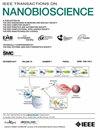Investigating the Adsorption Potential of Bentonite Nanoparticles as an Economical Adsorbent for Decontamination of Antibiotics From Aqueous Solution: Kinetics and Regeneration Studies
IF 4.4
4区 生物学
Q1 BIOCHEMICAL RESEARCH METHODS
引用次数: 0
Abstract
This study examines the adsorption efficacy of bentonite nanoparticles for removing Trimethoprim (TMP) and Penicillin G (PNG) antibiotics from aqueous solutions, emphasizing cost-effectiveness and operational efficiency. The bentonite nanoparticles, characterized by a surface area of 210–250 m2/g and a point of zero charge (pH研究膨润土纳米颗粒作为一种经济的吸附剂从水溶液中去除抗生素的吸附潜力:动力学和再生研究。
本研究考察了膨润土纳米颗粒从水溶液中去除甲氧苄啶(TMP)和青霉素G (PNG)抗生素的吸附效果,强调了成本效益和操作效率。膨润土纳米颗粒的表面积为210 ~ 250 m²/g,零电荷点(pHzpc)为~6,在酸性条件下(pH 3)表现出最佳性能。在吸附剂用量为0.1 g/L、初始抗生素浓度为100 mg/L、接触时间为90 min(25℃)的条件下,最大吸附量分别为36.07 mg/g (TMP)和39.43 mg/g (PNG)。TMP的吸附动力学符合准二阶模型(R²= 0.97);对于PNG, R²= 0.99),表明化学吸附是限速步骤。等温线研究与Freundlich和Dubinin-Radushkevich模型一致,表明非均质表面相互作用和主要的物理吸附机制。
本文章由计算机程序翻译,如有差异,请以英文原文为准。
求助全文
约1分钟内获得全文
求助全文
来源期刊

IEEE Transactions on NanoBioscience
工程技术-纳米科技
CiteScore
7.00
自引率
5.10%
发文量
197
审稿时长
>12 weeks
期刊介绍:
The IEEE Transactions on NanoBioscience reports on original, innovative and interdisciplinary work on all aspects of molecular systems, cellular systems, and tissues (including molecular electronics). Topics covered in the journal focus on a broad spectrum of aspects, both on foundations and on applications. Specifically, methods and techniques, experimental aspects, design and implementation, instrumentation and laboratory equipment, clinical aspects, hardware and software data acquisition and analysis and computer based modelling are covered (based on traditional or high performance computing - parallel computers or computer networks).
 求助内容:
求助内容: 应助结果提醒方式:
应助结果提醒方式:


